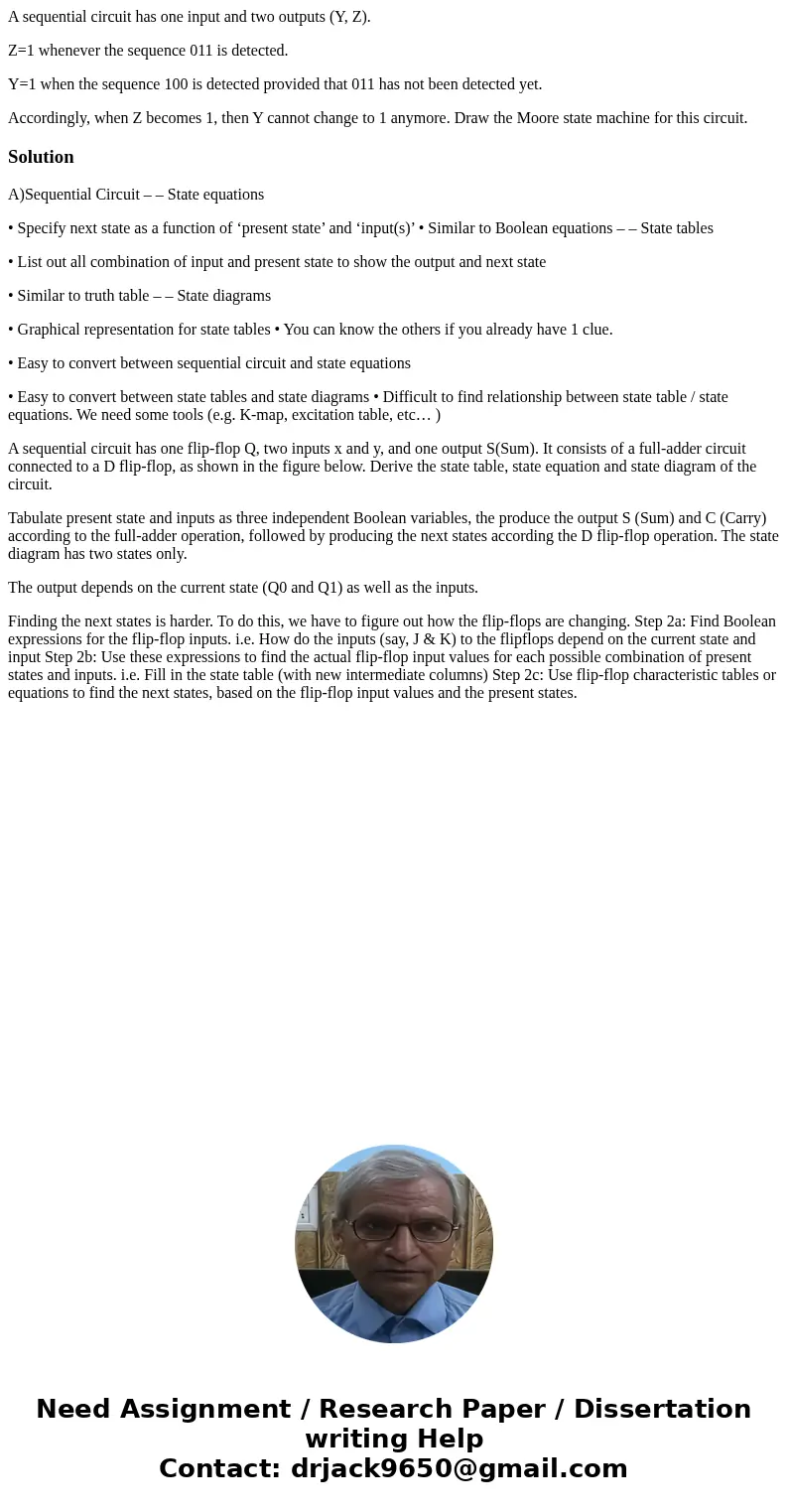A sequential circuit has one input and two outputs Y Z Z1 wh
A sequential circuit has one input and two outputs (Y, Z).
Z=1 whenever the sequence 011 is detected.
Y=1 when the sequence 100 is detected provided that 011 has not been detected yet.
Accordingly, when Z becomes 1, then Y cannot change to 1 anymore. Draw the Moore state machine for this circuit.
Solution
A)Sequential Circuit – – State equations
• Specify next state as a function of ‘present state’ and ‘input(s)’ • Similar to Boolean equations – – State tables
• List out all combination of input and present state to show the output and next state
• Similar to truth table – – State diagrams
• Graphical representation for state tables • You can know the others if you already have 1 clue.
• Easy to convert between sequential circuit and state equations
• Easy to convert between state tables and state diagrams • Difficult to find relationship between state table / state equations. We need some tools (e.g. K-map, excitation table, etc… )
A sequential circuit has one flip-flop Q, two inputs x and y, and one output S(Sum). It consists of a full-adder circuit connected to a D flip-flop, as shown in the figure below. Derive the state table, state equation and state diagram of the circuit.
Tabulate present state and inputs as three independent Boolean variables, the produce the output S (Sum) and C (Carry) according to the full-adder operation, followed by producing the next states according the D flip-flop operation. The state diagram has two states only.
The output depends on the current state (Q0 and Q1) as well as the inputs.
Finding the next states is harder. To do this, we have to figure out how the flip-flops are changing. Step 2a: Find Boolean expressions for the flip-flop inputs. i.e. How do the inputs (say, J & K) to the flipflops depend on the current state and input Step 2b: Use these expressions to find the actual flip-flop input values for each possible combination of present states and inputs. i.e. Fill in the state table (with new intermediate columns) Step 2c: Use flip-flop characteristic tables or equations to find the next states, based on the flip-flop input values and the present states.

 Homework Sourse
Homework Sourse